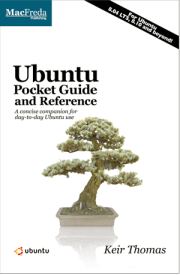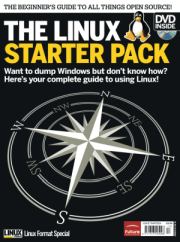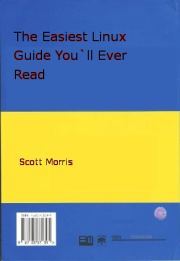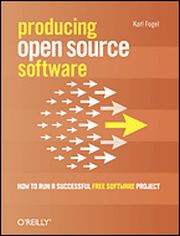Last Updated on April 27, 2023
Individuals wanting to learn about the Linux operating system have a large selection of books to choose from. There are many thousands of informative Linux books which are in-print and available to download or buy at reasonable cost. However, as many users are attracted to Linux for the very reason that it is available under a freely distributable license, some will also want this to extend to the documentation they read.
The focus of this article is to select some of the finest Linux books which are available to download for free. The vast majority of the books featured here can also be freely distributed to others.
To cater for all tastes, we have chosen a wide range of books, encompassing general introductions to Linux, books that concentrate on a specific distribution or application, books for programmers, as well as books that have defined the evolution of free software. All of the texts here come with our strongest recommendation. So get reading (and downloading).
1. Ubuntu Pocket Guide and Reference
By Keir Thomas (PDF; 152 pages)
This book is a concise companion for everyday Ubuntu use. It provides a good grounding in getting to grips with the Ubuntu 8.04 and 8.10 distributions.
Topics covered include:
- Installing & Configuring Ubuntu
- Learning how to use the desktop covering logging in, layout, virtual desktops, and useful applications
- Understanding how user accounts and the filesystem work
- Getting to grips with the command-line
- Software management including an overview of Synaptic, working with repositories, and a basic overview of compiling from source code
- Securing the system, including configuring a firewall, antivirus, and how to encrypt file and folders
2. Two Bits
By Christopher M. Kelty (PDF; 400 pages)
In Two Bits, the author investigates the history and cultural significance of Free Software, revealing the people and practices that have transformed not only software, but also music, film, science, and education.
The book focuses on three different areas:
- Geeks, Recursive Publics, Protestant Reformers, Polymaths, and Transhumanists
- Describes what Free Software is and where it came from, with five chapters detailing the historical narrative of a particular kind of practice: creating a movement, sharing source code, conceptualizing openness or open systems, writing copyright (and copyleft) licenses, and coordinating collaborations
- Modulations
3. The Linux Starter Pack
By Future Publishing (PDF; 130 pages)
Here’s a complete guide to using Linux, taking you from beginner level to an intermediate user with ease. This book shows users how to install Linux, navigate around the desktop, use common software, add more programs and fix any problems that may be encountered.
It offers sections on:
- The Linux desktop including Compiz desktop effects
- OpenOffice.org Writer, Calc, Impress Base
- Photo editing
- Playing games
- Multimedia including using media codecs, media ripping, disc burning, creating disc inlays
- Internet: Surfing the web, instant messaging, BitTorrent downloads
- Adding software
- Software recommendations
- Printing documents
- Account management
- Security
- Glossary of technical terms
4. The Easiest Linux Guide You’ll Ever Read
By Scott Morris (PDF; 162 pages)
The target audience for this book are individuals who are competent with using Windows, who have never attempted to use Linux but are interested in giving it a try. The overall objective is to give people a bridge from what they already know to the powerful, fascinating world of the Linux operating system.
The book explains:
- How to get Linux
- Learn about the Desktop
- How to install applications
- The command line
- Explains where Linux is similar to Windows
- Explains the key differences between these two operating systems
- Dispels many myths about Linux
5. Producing Open Source Software
By Karl Fogel (PDF, XML, Single HTML page, Multiple HTML pages; 192 pages)
Producing Open Source Software is a book about the human side of open source development. It describes how successful projects operate, the expectations of users and developers, and the culture of free software.
This book is meant for software developers and managers who are considering starting an open source project, or who have started one and are wondering what to do now.
Topics covered include:
- General advice on starting a project: Choose a Good Name, Have a Clear Mission Statement, Make it clear the Project is Free, Scope the Project
- Technical Infrastructure such as Mailing Lists, Version Control, Bug tracking, Web site
- Social and Political Infrastructure
- How to bring funding into a free software environment
- The art of good communications
- Packaging, Releasing and Daily Development
- Managing Volunteers
- Licenses, Copyrights and Patents
Next Section: 20 of the Best Free Linux Books – Part 2
This article is divided into four parts:
Part 1, Part 2, Part 3, Part 4
 Read our complete collection of recommended free and open source software. Our curated compilation covers all categories of software. Read our complete collection of recommended free and open source software. Our curated compilation covers all categories of software. Spotted a useful open source Linux program not covered on our site? Please let us know by completing this form. The software collection forms part of our series of informative articles for Linux enthusiasts. There are hundreds of in-depth reviews, open source alternatives to proprietary software from large corporations like Google, Microsoft, Apple, Adobe, IBM, Cisco, Oracle, and Autodesk. There are also fun things to try, hardware, free programming books and tutorials, and much more. |
